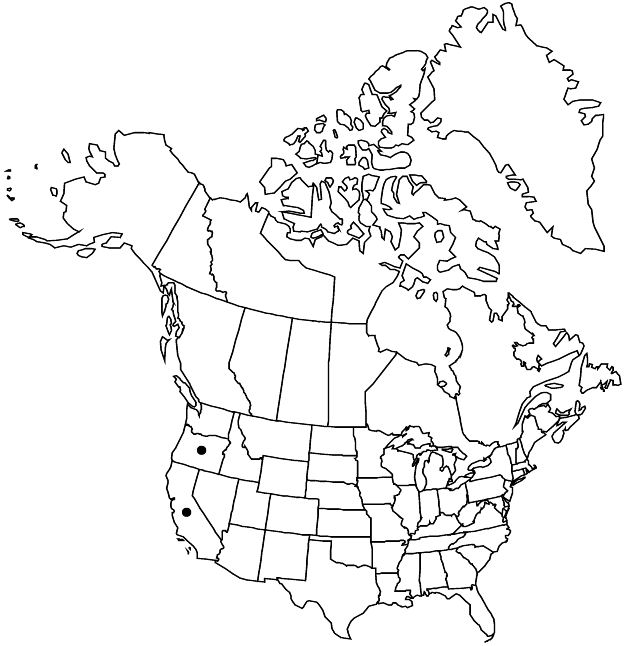Hesperolinon micranthum
in N. L. Britton et al., N. Amer. Fl. 25: 85. 1907.
Herbs, 5–20(–50) cm, glabrous or stems puberulent just distal to nodes; branched throughout, branches from proximal nodes in whorls, distal nodes alternate, widely spreading. Leaves alternate; stipular glands present at proximal nodes, usually absent distally; blade linear or narrowly oblong, 10–20(–30) × 1.5–2.5(–3) mm, base flat, not clasping, margins without stalked glands, surfaces sometimes microscopically glandular. Inflorescences: cymes monochasial (scorpioid or helicoid), open, internodes long, flowers widely scattered; bract margins eglandular or glands inconspicuous. Pedicels (2–)5–8 mm (–25 mm in proximal axils), (5–)10–15(–45) mm in fruit, spreading at 45–60(–90)° angle, not or only slightly bent at apex. Flowers: sepals erect or reflexed at tip, lanceolate, 1–3(–4) mm, sometimes unequal, marginal glands absent or minute, surfaces glabrous; petals not or only slightly spreading, white to pink, sometimes streaked with deeper pink or rose purple, usually oblanceolate, sometimes obovate, 1.5–3.5 mm, apex slightly notched; cup white, rim usually glabrous, sometimes hairy, petal attachment often a prominent protuberance in sinuses; stamens included; filaments 1.5–2.5 mm; anthers white to deep purple, dehisced anthers (0.3–)0.5–0.8(–1) mm; ovary chambers 6; styles (2–)3, white, 0.5–1(–2) mm, included. 2n = 36.
Phenology: Flowering Mar–Aug.
Habitat: Open areas, woodland margins, serpentine and nonserpentine soils, volcanic soils.
Elevation: 50–2000 m.
Distribution

Calif., Oreg., Mexico (Baja California).
Discussion
Hesperolinon micranthum is the most widespread species of the genus. It occurs in Oregon east of the Cascade Mountains and southern Blue Mountains to southern Oregon. In California, it occurs in the Klamath and Cascade ranges, Warner Mountains, Modoc Plateau, on the western slope of the Sierra Nevada, and in the North Coast and South Coast ranges, western Transverse Range, and Peninsular Ranges. Its southernmost population is near Cerro Matomi in Baja California. In much of its range, it is the only Hesperolinon species. It can be distinguished from other white-petaled species by its smaller flowers, included styles, and erect or only slightly spreading petals. In the southern part of its range, plants are generally smaller-flowered, have shorter pedicels, and more leaflike sepals; on the Modoc Plateau it grows almost exclusively on volcanic rock and plants are shorter, stockier, have broader leaves, shorter pedicels, and larger flowers. H. K. Sharsmith (1961) noted that any population may have some flowers in which appendages, auricles, or ligules are reduced or completely absent.
Selected References
None.